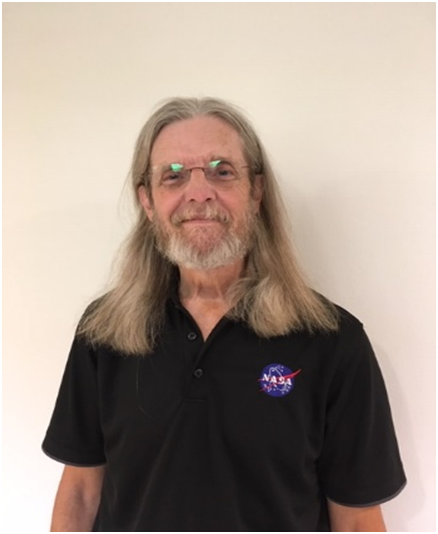
Title: The Effects of Microgravity and an Axial Magnetic Field on the Crystallization of ZBLAN Glass
Keynote
Dr. Dennis S. Tucker
Senior Field Assisted Sintering Technology Scientist, Idaho National Laboratory, USA
Abstract
ZBLAN glass is one of the heavy metal fluoride glass systems. It has a wide range of transmission from the near UV to the mid IR. Most importantly, ZBLAN optical fiber has a theoretical attenuation coefficient an order of magnitude lower than fused silica optical fiber. Unfortunately, ZBLAN tends to crystallize during fiber drawing and these crystallites scatter light increasing the attenuation coefficient above that of fused silica optical fiber. It was discovered that processing and drawing ZBLAN optical fiber in microgravity suppressed crystallization. It was also discovered that the same effect occurs when an axial magnetic field is used. This talk will focus on the experimental procedures used in both cases as well as the results. Future work will also be discussed.
Biography
Dr. Dennis S. Tucker has over 39 years of research experience in a number of Materials related projects. He has worked in private industry, LANL, Georgia Tech and retired from NASA after 32 years. He is presently, a Senior Scientist with the Idaho National Laboratory. He has extensive experience in electric field assisted sintering, mechanical testing techniques, fracture mechanics of brittle materials, electron microscopy, x-ray diffraction techniques. He has experience with nano-materials, dielectric, thermoelectric and piezoelectric properties. He has 8 years of experience with nuclear thermal propulsion. He has 27 years of experience in microgravity processing and is considered an international expert in microgravity processing of heavy metal fluoride glasses. Dr. Tucker has 7 patents, one provisional patent and approximately 100 technical publications.

Title: Layered double hydroxide materials and their application to electrochemical devices
Invited talk
Dr. Nataly Carolina Rosero-Navarro
Hokkaido University, Japan
Abstract
Layered double hydroxides (LDHs) structure consists of a positively charged metal hydroxide layer and interlayer anions for charge compensation of the cationic layer. The general formula [MII1-xMIIIx(OH)2] [(An−)x/n·mH2O], where MII is a divalent cation such as Ni2+, Mg2+, and Zn2+, MIII is a trivalent cation such as Al3+, Fe3+, and Cr3+, and An- is an anion such as CO32-, Cl-, and OH-. The internl redox reactions of the transition-metal-containing LDHs is a driving force used for diverse electrochemical reactions, therefore, LDHs have been studied as anion exchangers, catalysts, and electrode materials.
In this presentation, the synthesis of LDHs and their characterization for diverse electrochemical reaction will be discussed. LDHs powders are usually prepared by the co-precipitation process and used as anion exchange membranes (OH- conductors) and electrode material (electrolizers). LDHs can be also prepared as thin-film form, of particular application for electrochromic devices, in which the transition metal redox can be used in their optical properties.
Biography
Dr. Nataly Carolina Rosero-Navarro got Doctor in Chemistry from Universidad Auto nomaof Madrid, Spain, in 2011. She was awarded with two postdoctoral position in 2012 and 2013 at Materials for Energy Conversion and Storage Group of University of Aveiro and at Division of Applied Chemistry of Hokkaido University, respectively. Currently, she is a senior researcher at the Institute of Ceramic and glass in Spain andassociated professor visitorat Hokkaido University. Her research work is focused on the implementation of the solution processes for the synthesis and characterization of inorganic materials (glassy and crystalline) and organic-inorganic hybrid materials as coatings, membranes and composites for environmental and energy applications. She has accumulated a recognized experience in the design of hybrid and inorganic coatings with unique corrosion inhibition, bioactive and chemical-resistance properties providing significant knowledge in the area of ecofriendly sol-gel coatings and multilayer systems. She has also implemented novel soft chemical routes to prepare protonic hybrid membranes, sulfide and oxide solid electrolytes, materials for electrode/electrolyte interfaces and composites electrodes for all-solid-state batteries and, electrocatalysts for fuel cells and metal-air batteries providing new insights and concepts for the improvement of energy generation and storages. Her long-term goal includes the design and synthesis of inorganic and hybrid materials for the next “green” energy generation and storage. More than 80 publications and 150 participation in conferences. She got Ulrich Award and Woman in Global Science Award.
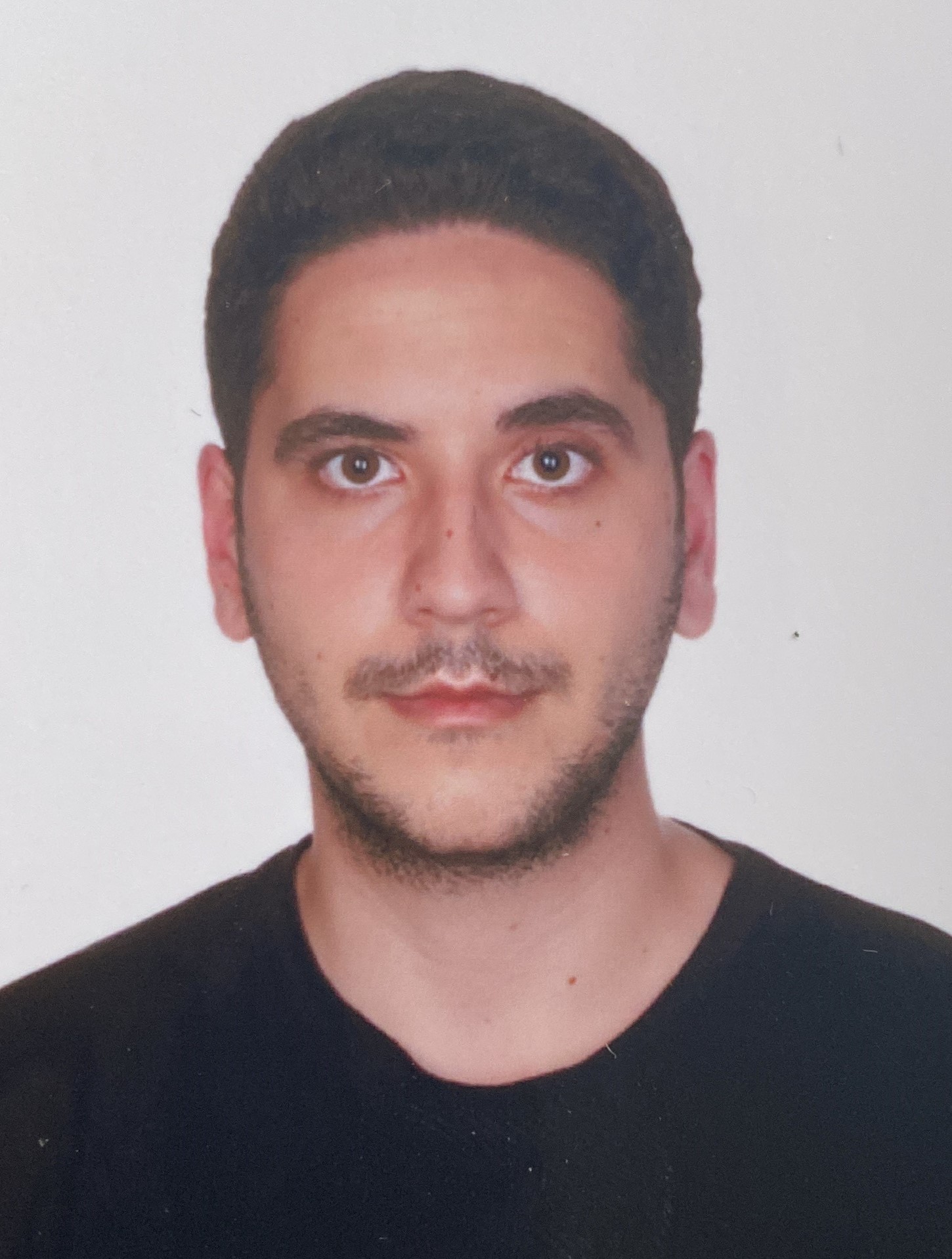
Title: Effect of Fatty Acid-Modified CalciumCarbonate (CaCO3) Fillers on Acoustic Properties of Polyether Based Integral Skin Polyurethane Foams in Automotive Industry
E-Poster Presentation
Mr. Ethem Gokhan Ozcelik
R&D Specialist, Pimsa Automotive, Turkey
Abstract
Under the aegis of unique properties, polyurethane has always been an immutable material for plenty of industries. Polyurethane has numerous advantages namely; lightweight, noise reduction, impact resistance, durability and cost efficient fabrication. Polyether based integral skin polyurethane foam parts are widely used automotive industry due to alpha plus performance in absorbing sound waves and transmission loss properties of the material. Fillers play large role to enhance specific properties of materials and make the product profitable. As a filler, calciumcarbonate (CaCO3), is one of the most widely used filler in polymer industry because it is feasible, allows cost efficiency and improves mechanical properties. On the other hand, it is not able that when CaCO3 is co oparetes with water, CaCO3particles prefer to aggregate during compounding with the polymer matrix due to hydrophilic nature of CaCO3. In this study CaCO3particles were modified from hydrophilic to hydrophobic with oleic acid treatment to prevent agglomeration and increased is persion quality of fillers in polymer matrix. Acoustic properties of polymer matrix which contain so leicacid modified CaCO3 is investigated and compared with same version of polyurethane with no filler and polyurethane composite which contains same amount of non-modified CaCO3.TheIdealpercentage of filler content is determined as % 4wt of polyether based polyolforeach samples. Additionally FTIR, DSC and TGA of samples are investigated. Results revealed that polyurethane composite with oleic acid modified CaCO3 performed enhanced sound absorption and transmission loss properties instead of the rest of the sample groups.
Biography
Ethem Gokhan Ozcelik has completed his BSc education from the Department of Materials Science and Engineering, Technical University of Gebze, TR and proceed MSc studies at Istanbul Technical University Departmant of Polymer Science and Technology. He has been working as a Research and Development Specialist at Pimsa Automotive R&D Center in Kocaeli Turkey since 2022. After his BSc, he started to his career worked for Center for Nanotechnology & Biomaterials Applications and Research as a Reasearch and Development Scientist. He has a conference paper at NanoBioMat2021 named “The effect of flow rate on the size of electrospun PMMA nanofibers.” His interests are Acoustic Properties of Polymeric Materials, Sustainable Materials and Electrospun Nanofibers.

Title: Low-Fouling Zwitterionic Polymeric Colloids As Resuscitation Fluids For Hemorrhagic Shock
Invited talk
Dr. Rajesh Kumar
Vice President of R&D, Influunt Vascular Incorporation, USA
Abstract
Colloids, known as volume expanders, have been used as resuscitation fluids for hypovolemic shock for decades, as they create an increase plasma oncotic pressure and expand intravascular volume. However, recent studies show commonly used synthetic colloids have adverse interactions with human biological systems in vitro and in vivo. In this work, we design a lowfouling amino (N)-oxide based zwitterionic polymer as an alternative volume expander with improved biocompatibility and efficacy. We demonstrate that the polymer possesses anti-fouling ability, resisting cell interaction and deposition in major organs, and is rapidly cleared via renal filtration and hepatic circulation, reducing risks for long-term side effects. In vitro and in vivo safety studies showed absence of adverse effects on hemostasis or acute safety risks. Finally, we show that, in a head-to-head comparison with existing colloids and plasma, the zwitterionic polymer serves as more potent oncotic agents for restoring intravascular volume in a hemorrhagic shock model. Our design of N-oxide-based zwitterionic polymers may lead to the development of alternative fluid therapies to treat hypovolemic shocks and for improving fluid management in general.
Biography
Rajesh Kumar has completed his Ph.D. from the Department of Chemistry, Southern Methodist University and postdoctoral studies from the Department of Cardiology, Department of Pediatrics, Boston Children’s Hospital, Harvard Medical School, USA. He has been working as a Vice President of R&D in Influunt Vascular Incorporation in USA since 2021. He has published more than 8 papers in reputed journals and has been serving as the reviewer of 6 peer-reviewed journals.

Title: Porous Catalytic Structures for High Efficiency Water Electrolysis at Higher Loads to meet Future Energy Demands
Invited talk
Dr. Mallikarjun Bhavanari
Assistant Professor, Manipal Institute of Technology , India.
Abstract
Transition of hydrocarbon to clean energy economy can occur with electrocatalytic water splitting. Water splitting is considered as a promising path for energy conversion and storage in which electrocatalysts play a crucial role. This led researchers to focus on development of novel and efficient catalysts for electrolysis. The design of electrocatalyst with active sites, chemical kinetics and bubble generation is focus of interest. Also, the bubble diffusion and path plays a key role. The developed catalysts has to be operated at higher loads compared to the current operating loads to meet future energy demands. A highly porous structure with easy charge-transfer, constant bubble generation and easy diffusion facilitates the stability of electrocatalyst at higher loads. The development of various porous structured catalyst, their electrochemical reactions, and post-mortem results after long-term tests at higher loads will be discussed.
Biography
Dr. Mallikarjun Bhavanari is expert in development of nanomaterials for energy applications. Currently his research is focused on development of industrially feasible highly efficeint multi-funcational electrocatalysts for hydrogen generation, energy storage and harvesting. His doctoral thesis was focused on electrocatalytic materials for hydrogen generation Prior to this work, he has gained broad industrial oriented research experience at government industrial research organisations, where he received patent and publications. As a recognition to his work, he has received various research awards/prizes during his study. Award of Recognition by NSRRC; Best Presentation Award from RSC Nanoscale Advances journal, DST Award are few to mention. He is a fellow and active member of research organizations. Dr. Mallikarjun Bhavanari is working as assitant professor at Manipal Institute of Technology, Manipal Academy of Higher Education, India.
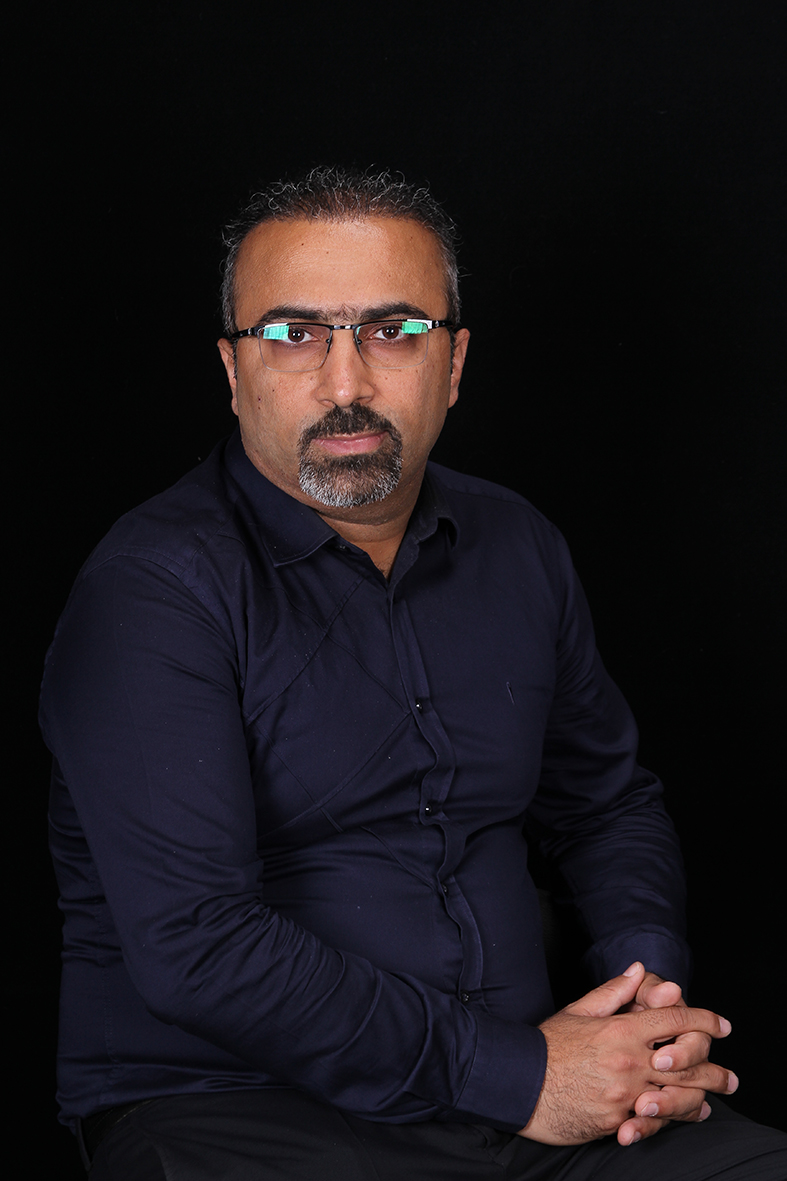
Title: Nanomaterial catalysts; a good tool for amplification of electrochemical sensor and biosensors
Plenery talk
Prof. Hassan Karimi-Maleh
School of Resources and Environment, University of Electronic Science and Technology of China, China
Abstract
Electrochemical sensors showed many advantages such as easy operation, low cost, portable ability and good selectivity. But, high over-voltage and low redox signal of pharmaceutical, environmental and biological compounds are main problems for design of highly sensitive electrochemical sensor and biosensors. For overcoming of these problems, nanomaterials selected as powerful catalysts for fabrication of highly selective and sensitive electrochemical sensors. Nanomaterials with unique properties were selected for modification of electroanalytical sensors. High surface are and good electrical conductivity are main advantages of nanomaterials in this regards. We discuss about role nanomaterials in modification and amplification of electrochemical sensors in this presentation.
Biography
Hassan Karimi-Maleh works as professor in the School of Resource and Environment, University of Electronics Science and Technology of China (UESTC). He is a highly cited researcher selected by clarivate analytics 2018 (cross-filed), 2019 (Agriculture field) and 2020 (cross-filed) and 2021 (Chemistry and Agriculture, two categories in one year) and Top 1% Scientists in Chemistry and Agriculture simultaneously in ISI Essential Science Indicators from 2014 until now. He has published more than 341 SCI research papers with more than 18782 citations and H-index 84 (according to WOS report) and 21420 citations and h-index 92 (according to google scholar). He works as editorial board of more than 20 international journals such as Applied Nanoscience (associated editor Springer IF 3.674), Alexandria Engineering Journal (associated editor ELSEVIER IF 3.732), Journal of nanostructure in Chemistry (associated editor Springer IF 6.391), Scientific Report (associated editor Nature IF 4.379), InfoMat (Editor Wiley IF 25.405), Journal of food measurement and characterization (Editor and guest editor Springer IF 2.431), Food and chemical toxicology (Guest editor Elsevier IF 6.023), Chemosphere (Managing Guest Editor Elsevier IF 7.086) and etc. He also works as adjunct Professor in University of Johannesburg, South Africa and Quchan University of Technology, Quchan, Iran. He work as leader nanobiosensor group in Ton Duc Thang University, Vietnam 2019-2020. He publishes one book in Springer publisher and also one chapter book in same publisher. Recently, he published one paper in Science journal. He was plenary speaker many conference such as The 8th International Conference on Water Resource and Environment (WRE 2022), 6th Postgraduate Colloquium for Environmental Research 2022, 7th international conference on agricultural and biological science (abs) (2021) and etc. He worked as leader Nano biosensor group on Duc Thang University, Vietnam in 2019-2020.
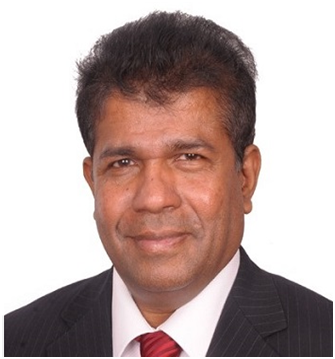
Title: Graphene industrial applications towards decarbonization
Keynote
Dr. Sivasambu Bohm
Chief Scientific officer for Ceylon Graphite, Imperial College London, UK
Abstract
Removal of 100 to 1,000 gigatonnes of CO2 this century may be needed to achieve deep decarbonization and avoid exceeding the 1.5°C climate target. Nano wonder materials and nanotechnology is playing key role. Graphene has found its use in numerous industrial applications due to its unique properties. While its impermeable and conductive nature can replace currently used anticorrosive toxic pigments in coating systems, graphene can be an important component as a next-generation additive for many industrial applications (1). Graphene, a sheet of carbon atoms bound together in a honeycomb lattice pattern, is hugely recognized as a “wonder material” due to the myriad of astonishing attributes it holds. It is a potent conductor of electrical and thermal energy, extremely lightweight chemically inert, and flexible with a large surface area. It is also considered eco-friendly and sustainable, with unlimited possibilities for numerous applications.
The current bottlenecks in using graphene & graphene oxide are the availability of cost-effective, high-quality materials from graphite and their effective incorporation into the product matrices.
On overcoming these factors, graphene may attract significant demands in terms of volume consumption. Graphene can be produced on industrial scales and cost-effective top-down routes such as chemical, electrochemical, and/or high-pressure mechanical exfoliation. Graphene depending on end applications can be chemically tuned and modified via functionalization so that easy incorporation into product matrices is possible. This talkable to discuss(Siva progress in chemistry short bio 1981 to 2021) and Graphene advanced production methods and their impact on the quality of graphene produced in terms of energy input and quality. Graphene with an average thickness below five layers were produced by few methods with varied defects. Graphene additive role in Graphene Inks and Anti corrosion coating, PEM Fuel cells, Li-ion batteries, Redox flow batteriesshortly discussed and commercial development of industrial energy storage applications.
Biography
Dr Sivasambu Bohm received his first degree in Chemical Engineering in Berlin, followed by an M.Sc. at Hahn Meitner Institute. After gaining his PhD at the University of Bath in Chemistry, he worked at different academic institutions, including the University of Swansea, TU Delft, The University of Birmingham & India Institute of Technology Bombay. Siva has 25 years of industrial experience in various research fields; metallurgy, protective coatings, energy storage in the automotive industry, aerospace and construction materials nanotechnology, Graphene and industrial applications of Graphene. Dr Bohm published 40 patents and 100 scientific publications. He is a Fellow of the Royal Society of Chemistry and a Fellow of Technical Surface Coatings. Dr Bohm has been awarded the Royal Society Industry Fellowship at the University of Cambridge, CGC. In 2020, Dr Bohm completed his fellowship at Imperial College London 2021 and worked as a Graphene expert scientist at AM Commercial UK Ltd / AM Global R&D Asturias till 2021.Currently, Chief Scientific officer for Ceylon Graphite, Imperial College London Industry Consultant &Technical Director in Huzhou, Zhejiang.
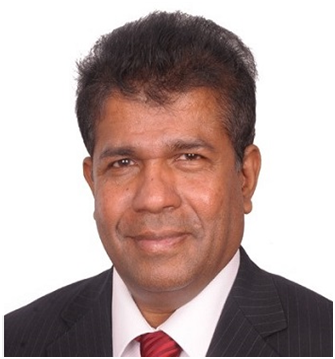
Title: Graphene industrial applications towards decarbonization
Keynote
Dr. Sivasambu Bohm
Chief Scientific officer for Ceylon Graphite, Imperial College London, UK
Abstract
Removal of 100 to 1,000 gigatonnes of CO2 this century may be needed to achieve deep decarbonization and avoid exceeding the 1.5°C climate target. Nano wonder materials and nanotechnology is playing key role. Graphene has found its use in numerous industrial applications due to its unique properties. While its impermeable and conductive nature can replace currently used anticorrosive toxic pigments in coating systems, graphene can be an important component as a next-generation additive for many industrial applications (1). Graphene, a sheet of carbon atoms bound together in a honeycomb lattice pattern, is hugely recognized as a “wonder material” due to the myriad of astonishing attributes it holds. It is a potent conductor of electrical and thermal energy, extremely lightweight chemically inert, and flexible with a large surface area. It is also considered eco-friendly and sustainable, with unlimited possibilities for numerous applications.
The current bottlenecks in using graphene & graphene oxide are the availability of cost-effective, high-quality materials from graphite and their effective incorporation into the product matrices.
On overcoming these factors, graphene may attract significant demands in terms of volume consumption. Graphene can be produced on industrial scales and cost-effective top-down routes such as chemical, electrochemical, and/or high-pressure mechanical exfoliation. Graphene depending on end applications can be chemically tuned and modified via functionalization so that easy incorporation into product matrices is possible. This talkable to discuss(Siva progress in chemistry short bio 1981 to 2021) and Graphene advanced production methods and their impact on the quality of graphene produced in terms of energy input and quality. Graphene with an average thickness below five layers were produced by few methods with varied defects. Graphene additive role in Graphene Inks and Anti corrosion coating, PEM Fuel cells, Li-ion batteries, Redox flow batteriesshortly discussed and commercial development of industrial energy storage applications.
Biography
Dr Sivasambu Bohm received his first degree in Chemical Engineering in Berlin, followed by an M.Sc. at Hahn Meitner Institute. After gaining his PhD at the University of Bath in Chemistry, he worked at different academic institutions, including the University of Swansea, TU Delft, The University of Birmingham & India Institute of Technology Bombay. Siva has 25 years of industrial experience in various research fields; metallurgy, protective coatings, energy storage in the automotive industry, aerospace and construction materials nanotechnology, Graphene and industrial applications of Graphene. Dr Bohm published 40 patents and 100 scientific publications. He is a Fellow of the Royal Society of Chemistry and a Fellow of Technical Surface Coatings. Dr Bohm has been awarded the Royal Society Industry Fellowship at the University of Cambridge, CGC. In 2020, Dr Bohm completed his fellowship at Imperial College London 2021 and worked as a Graphene expert scientist at AM Commercial UK Ltd / AM Global R&D Asturias till 2021.Currently, Chief Scientific officer for Ceylon Graphite, Imperial College London Industry Consultant &Technical Director in Huzhou, Zhejiang.
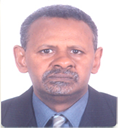
Title: Design and operation of low energy consumption passive human comfort solutions
Invited talk
Dr. Abdeen Mustafa Omer
Energy Research Institute (ERI), England, United Kingdom
Abstract
The use of renewable energy sources is a fundamental factor for a possible energy policy in the future. Taking into account the sustainable character of the majority of renewable energy technologies, they are able to preserve resources and to provide security, diversity of energy supply and services, virtually without environmental impact. Sustainability has acquired great importance due to the negative impact of various developments on environment. The rapid growth during the last decade has been accompanied by active construction, which in some instances neglected the impact on the environment and human activities. Policies to promote the rational use of electric energy and to preserve natural non-renewable resources are of paramount importance. Low energy design of urban environment and buildings in densely populated areas requires consideration of wide range of factors, including urban setting, transport planning, energy system design and architectural and engineering details. The focus of the world’s attention on environmental issues in recent years has stimulated response in many countries, which have led to a closer examination of energy conservation strategies for conventional fossil fuels. One way of reducing building energy consumption is to design buildings, which are more economical in their use of energy for heating, lighting, cooling, ventilation and hot water supply. However, exploitation of renewable energy in buildings and agricultural greenhouses can, also, significantly contribute towards reducing dependency on fossil fuels. This will also contribute to the amelioration of environmental conditions by replacing conventional fuels with renewable energies that produce no air pollution or greenhouse gases. This study describes various designs of low energy buildings. It also, outlines the effect of dense urban building nature on energy consumption, and its contribution to climate change. Measures, which would help to save energy in buildings, are also presented.
Biography
Dr. Abdeen Mustafa Omer (BSc, MSc, PhD) is an Associate Researcher at Energy Research Institute (ERI). He obtained both his PhD degree in the Built Environment and Master of Philosophy degree in Renewable Energy Technologies from the University of Nottingham. He is qualified Mechanical Engineer with a proven track record within the water industry and renewable energy technologies. He has been graduated from University of El Menoufia, Egypt, BSc in Mechanical Engineering. His previous experience involved being a member of the research team at the National Council for Research/Energy Research Institute in Sudan and working director of research and development for National Water Equipment Manufacturing Co. Ltd., Sudan. He has been listed in the book WHO’S WHO in the World 2005, 2006, 2007 and 2010. He has published over 300 papers in peer-reviewed journals, 200 review articles, 17 books and 150 chapters in books.

Title: Lithium Sulfide– rGO Composite Electrode
Keynote
Dr. Zahilia Cabán Huertas
Chemist and material scientist, The Karlsruhe Institute of Technology , Germany
Abstract
Li‐ion batteries are the powerhouse for the electronic devices in this modern mobile society, and an enabler of the current communication revolution. Consumers demands advanced electronics and sustainable industries in general. To satisfy these demands, the new generation of rechargeable batteries need to provide much higher specific energy density than the actual technology. Commercial Lithium Ion Batteries (LIBs) consist of Lithium Metal Oxides as positive electrodes and graphite as a negative electrode, this system has energy density values ca. 250 WhL-1.
Lithium sulfide (Li2S) provides a promising route for lithium storage due to high theoretical specific capacity (1166 mAh g−1)andspecific energy(2600Whkg_1). This positive electrode material can be coupled with lithium-free negative electrode to develop high-energy-density batteries. There are still formidable challenges with it (e.g., low conductivity, high overpotential, and irreversible polysulfide diffusion) and associated fabrication processes (e.g., low reversible capacity), which have prevented the realization of high electrochemical utilization and stability.However, the complex synthesis methodof Li2S–carbon composites restrains the large-scale productivity. We propose a method to synthesize a Li2S based nanocomposite cathode material by dissolving Li2S as the active material, polyvinylpyrrolidone (PVP) as the carbon precursor, and graphene oxide (GO) as a matrix to enhance the conductivity, followed by a co-precipitation and high-temperature carbonization process. This work may shed fresh insight into bridging the huge gap between high energy and safety of rechargeable cells for feasible applications.
Biography
Dr. Zahilia Cabán Huertas was awarded in2021 with a Marie Skłodowska-Curie Actions Individual Fellowship (MSCA IF), currently working at Helmholtz Institute Ulm Electrochemical energy storage (HIU)/The Karlsruhe Institute of Technology (KIT).In.2019 got a Tecniospring fellowship at Aalto University Electrochemical Energy Conversion and Storage group. Zahilia got Doctor in chemistry in 2017 from Autonomous University of Barcelona (UAB) and The Catalan Institute of Nanoscience and Nanotechnology (ICN2) developing materials for LIBs. The research interest of Zahilia research is on the development of all solid state lithium batteries focusing in the development of lithium sulfide positive electrodes (Li2S), solid electrolytes and silicon negative electrodes. Since her bachelor Zahilia has been member of the American Chemical Society participating in several meeting and volunteering in outreach activities.
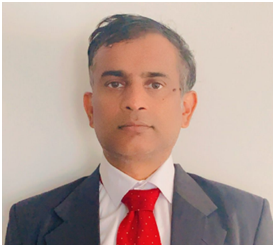
Title: Recent Advances in Materials for Energy Storage and sustainability
Keynote
Dr. M V Reddy
Senior Professional Researcher at Nouveau Monde Graphite, Canada
Abstract
In recent years advanced materials had a considerable interest in worldwide researchers due its interesting functional properties and applications in areas of energy storage and conversion, water, and health care technology
In my talk, I will discuss global issues related to Energy and Environment, also various studies high power and Energy density materials for related to electrical energy storage and conversion applications. Materials mining, fabrication, characterization techniques, fundamentals, interface studies and applications. I will focus on materials challenges for electric vehicles and smart grid and renewable technology applications. Battery fabrication and various fast charging, thermal managment, importence of thermal runways studies for electric vechicles and in situ and exsitu studies, reaction mechanisms, and present challenges in electric vehicles will be discussed. Finally,i will discuss brieflymaterials mining and sustainability
Biography
Senior Professional Researcher at Nouveau Monde Graphite, Canada × Biography Dr. M.V. Reddy obtained his Ph. D (2003) in the area of Materials Science and Engineering (with highest distinction)from the University of Bordeaux, France.From July 2003 to May 2019,he worked at the Department of Materials Science and Engineering, Chemistry and Physics, National University of Singapore (NUS). Singapore. June 2019 to Aug 2021, he worked atthe Centre of Excellence in Transportation Electrification and Energy Storage, Hydro-Québec, Canada. Currently working as a Senior Professional Researcher and group leader in Energy Storage Technology atNew graphite world(Nouveau MondeGraphite)(NMG),Quebec, Montreal, Canada. Over the past 21 years,he has conducted leading research on Materials for Energy Storage& Conversion, Environmental protection, Materials processing & characterization,Nanotechnology,andthe development of in situ techniquesfor Energy storage renewable technologies. Dr. Reddy has published220 papers in various international journals.He has obtained an h-index of 70 with over 17700 citations. These have recently placed him within the top 2% highly cited researchers in Energy (world Ranking the 1002ndout of 186500 researchers) and Highly cited Researcher in Materials Science in Canada (National ranking:39) Dr. Reddy is serving as an editorial advisory board member in Materials Research Bulletin and Journal of Energy Storage (Elsevier, Scopus journal) as well as several open access journals Awards: Outstanding Science Mentorship Award (2010- 2018), and Inspiring Research Mentor Award (2011 to 2019), 2021 Battery Materials electrochemistry award from the Electrochemical Society of India, Indian Institute of Science (IISc), Bangalore, India. Invited life member inICDD USA and IPS Singapore and Global Materials Network Invited committee member in various international Research proposals, Ph.Dtheses examiner and conference organizationsand visiting Professor at various Universities Given 192 talks (plenary 14, key note 56 , invited 104, oral 18 ) at various international conferences and workshops & FDP related to Materials Engineering, Mechanical, Electrical, ChemicalEngg and Chemistry, Physics, Materials science
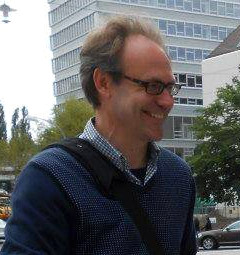
Title: Improving bio-function via 3D Bioprinting of Cell-Hydrogels
Keynote
Prof. Per Arvid Löthman
Foviatech GmbH, Hamburg, Germany
Abstract
The shortage of transplantable organs world wider has lead to the development of novel techniques such as 3D Bioprinting in order to “manufacture” functioning organs and native tissues such as liver, kidneys or even the heart. Eventhough the technique is still in its infancy with respect to realizing functional organs it is prospected that the fuirst functional organs will be realized within the next 15 years.
The technique of 3D bioprinting has demonstrated potential for the fabrication of constructs or organoids that bear resemblance in form and functionality to human organs. Native tissues are living composites of cells embedded within a complex extracellular matrix (ECM) of biopolymers that provide structural support and biochemical cues to the cells. By mimicking the micro-environmental features of tissues, bioprinted constructs with precisely patterned cells and polymeric components can serve as in vitro models of native tissue for basic research or can be translated into the clinic as implantable constructs. As a class of materials, hydrogels are uniquely suited for such applications and in 3D bioprinting, as they can provide mechanical protection and structural support during the printing process, be tuned to recapitulate many features of the native ECM, and be customized to influence cell–gel interactions postprinting. Materials design for bioprinting has been covered to a great extent aloready so here I will focus on the design and development of hydrogel bioinks that exist in the gel phase during the entire printing process and include embedded cells as a strategy for improving the achievable bio-functionality of 3D bioprinted constructs.
Biography
Dr. Per A. Löthman obtained his Ph.D. degree from Twente University , The Netherlands in the field of Magnetics and Self-assembly, conducted research in Canada, France and Germany on carbon nanotubes, Graphen and related 2D nanomaterials. His research is interdisciplinary and involve sensors and sensing, 2D advanced materials, BioNanotechnology including DNA, S-layers, Viruses (archaea, bacteriophages), Biomolecular Architecture, Botany and functional surfaces. Dr. Löthman has published over 80 scientifical articles, several book chapters and serves as a reviewer and he is on the editorial board for several journals such as Nature, Nature Materials, Journal of Bioanalytical and Analytical Chemistry, Journal of Colloid and Interface Science, Thin Solid Films, Sensors and Actuators, Microsystems Technologies, Biophysical Reviews and Letters and International Јоurnal of Applied Mathematics and Theoretical Physics (IJAMTP). Dr. Löthman is CSO (Chief Scientifical Officer) at Foviatech GmbH in Hamburg, Germany, a young innovative high-tech company in the field of advanced materials and artificial intelligence, and a senior lecturer in “Nanomedicine, Nanopharmacy” and “Sensors and Sensing in Engineering, Biology and Medicine” (Kaiserslautern University) and Mechatronics Systems and Design (Hamburg University), Germany and Manufacturing Engineering (HTW Berlin) Germany.
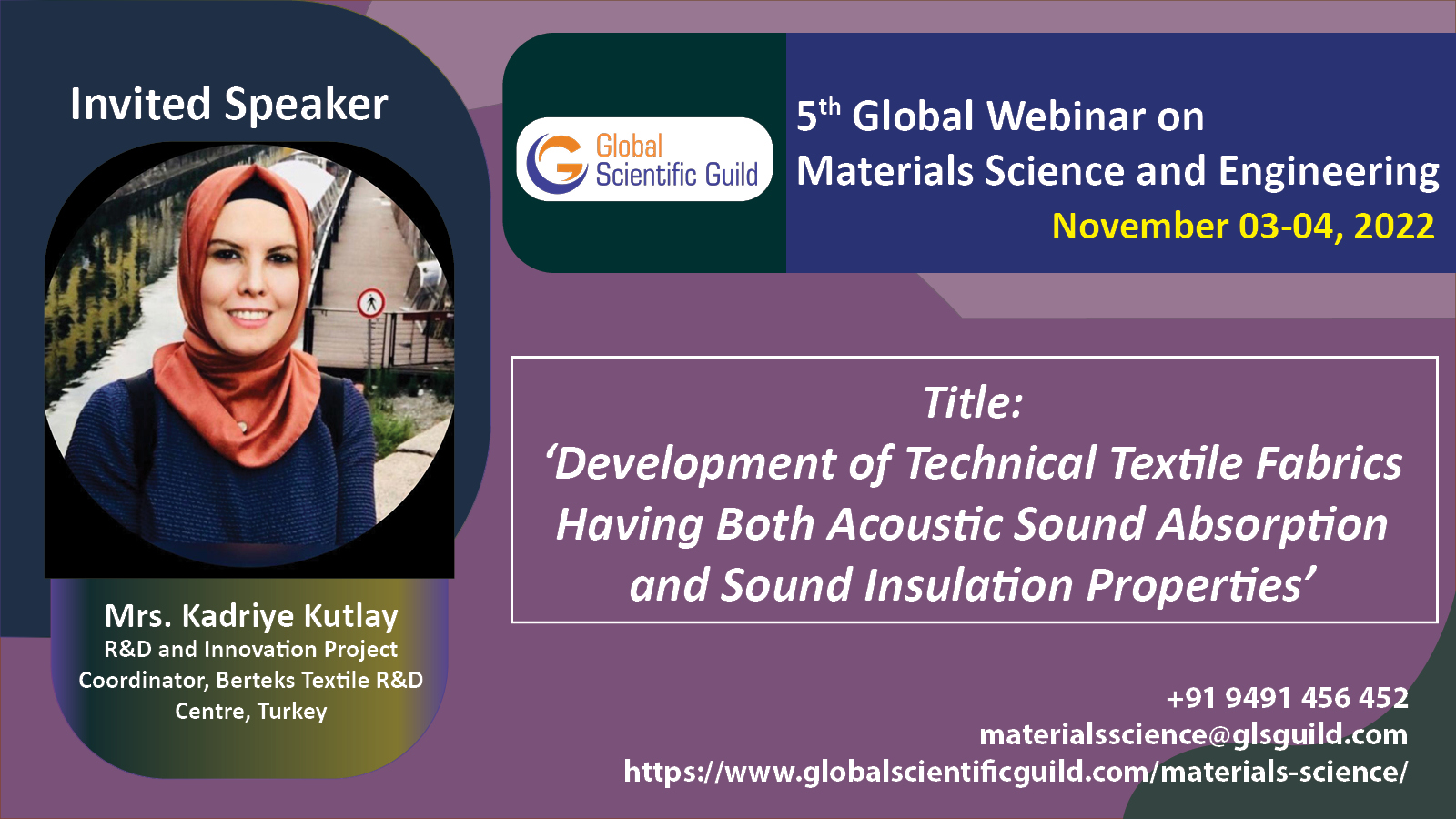
Title: Development of Technical Textile Fabrics Having Both Acoustic Sound Absorption and Sound Insulation Properties
Invited talk
Mrs. Kadriye Kutlay
R&D and Innovation Project Coordinator, Berteks Textile R&D Centre, Turkey
Abstract
Sound absorption and sound transmission loss characteristics are inverse parameters. As the sound transmission loss increases, the sound absorption coefficient decreases. Likewise, as the sound absorption coefficient increases, the sound transmission loss decreases.
In this study, optimum conditions for sound absorption and sound insulation properties were determined. An experimental study has been carried out for the fabric that will provide Sound Absorption Coefficient α-0.80-1.00, Sound Transmission Loss Value 10-15. Weaving modeling and coating experiments were carried out on the fabric. Performance tests and acoustic values of the obtained samples were measured. How affect the different chemical coatings, yarn types, thickness and weaving types the results was investigated.
In addition, products designed using recycled yarns and bio-sourced materials have been ensured to contribute to the sustainable ecosystem.
Biography
Kadriye Kutlay graduated from the Department of Chemistry at Uludağ University, Turkey in 1999. Kadriye Kutlay completed her Master`s Degree from the Department of Fiber&Polymer Engineering, Bursa Technical University ,Turkiye in 2019. She still continues her Ph.D. from Department of Polymer Material Engineering, Bursa Technical University, Turkiye. Her research studies is focused on the natural flame retardant materials and acoustics in textiles. She is currently working as R&D and Innovation Project Coordinator at Berteks Tekstil. She has 18 years of experience with all yarn and fabric physical tests, laboratory management, product certification, project management, technical training, sustainability.
“ Will be updated soon...”
+91 9491 456 452
Door No.200, Immidhihalli Main Road, Whitefield-560066, Bangalore, India
About Us
Global Scientific Guild organizes conferences and webinars to promote quality research and real world impact in an atmosphere of true international co-operation between scientists, doctors, professors, practitioners, engineers and industry by bringing together the world class renowned personalities to discuss the latest developments and innovations at one common platform.